What's New
Displaying results 671 - 680 of 4052

Resource | Publications,
The World Drug Report 2019 is again presented in five separate parts that divide the wealth of information and analysis contained in the report into individual reader-friendly booklets in which drugs are grouped by their psychopharmacological effect for the first time in the report’s history.
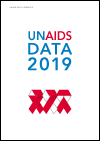
Resource | Publications,
Gains continue to be made against the epidemic, but those gains are getting smaller year-on-year. There has been steady progress in the reduction of AIDS-related deaths, but efforts to reach the 2020 target for reductions in HIV infections are clearly off-track.
Gains in eastern and southern Africa are driving global progress. In much of the rest of the world, there are worrying setbacks in key countries and entire regions. More than half of new HIV infections in 2018 were among key populations and their sexual partners. An epidemic transition metric suggests that a diverse group of 19 countries are on the path to ending AIDS. Many more countries are not.
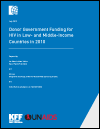
Resource | Publications,
This report provides the latest data on donor government resources available to address HIV in low- and middle-income countries, reporting on disbursements made in 2018. It is part of a collaborative tracking effort between UNAIDS and the Kaiser Family Foundation that began more than 15 years ago, just as new global initiatives were being launched to address the epidemic.
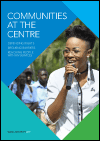
Resource | Publications,
The report highlights how communities are central to ending AIDS. Across all sectors of the AIDS response, community empowerment and ownership has resulted in a greater uptake of HIV prevention and treatment services, a reduction in stigma and discrimination and the protection of human rights. However, insufficient funding for community-led responses and negative policy environments impede these successes reaching full scale and generating maximum impact.
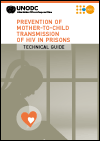
Resource | Guidelines,
The rise in the global female prison population, women’s unique vulnerabilities to HIV infection and insufficient provision and inequitable access to HIV services places the prevention of motherto-child transmission (PMTCT) in prisons high on the agenda of HIV prevention among key populations.
This technical guide is intended to support countries in their efforts to increase their capacity to eliminate mother-to-child transmission of HIV in prison, and achieve the ultimate goal of ending AIDS as a public health threat by 2030, “leaving no one behind”.
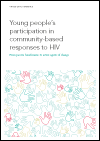
Resource | Publications,
The objective of this research was to better understand and document community-led interventions that aim to strengthen demand creation and uptake of HIV and sexual and reproductive health services, with a focus on engaging young people as beneficiaries, partners and implementers. The primary audience of this report are donors, technical cooperation agencies and government authorities.
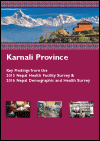
Resource | Publications,
The 2015 Nepal Health Facility Survey (NHFS) is the first comprehensive assessment of health facilities in Nepal that harmonizes various health facility surveys among the MoHP and health development partners. The survey was designed to collect information from formal-sector health facilities in the country on the delivery of health care services and to examine the preparedness of facilities to provide quality health services in child health, family planning, maternal and newborn care, HIV, sexually transmitted infections (STIs), non-communicable diseases, tuberculosis, and malaria.
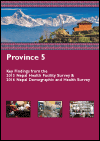
Resource | Publications,
The 2015 Nepal Health Facility Survey (NHFS) is the first comprehensive assessment of health facilities in Nepal that harmonizes various health facility surveys among the MoHP and health development partners. The survey was designed to collect information from formal-sector health facilities in the country on the delivery of health care services and to examine the preparedness of facilities to provide quality health services in child health, family planning, maternal and newborn care, HIV, STIs, non-communicable diseases, tuberculosis, and malaria.
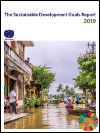
Resource | Publications,
Since its inception in 2015, the 2030 Agenda has provided a blueprint for shared prosperity in a sustainable world—a world where all people can live productive, vibrant and peaceful lives on a healthy planet. The year 2030 is just over a decade away, and we must ask ourselves if our actions today are laying the right foundation to achieve the Sustainable Development Goals (SDGs). The Sustainable Development Goals Report 2019 provides evidence-based insights to answer this question.
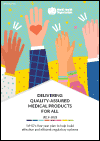
Resource | Publications,
WHO’s 2019–2023 Plan to help build effective and efficient regulatory systems is designed to help national regulators to deliver regulation that protects the public while enabling timely access to quality products and encouraging innovation. Closely aligned with WHO’s 13th General Programme of Work (GPW13), this Plan prioritizes regulatory initiatives to help our Member States increase access to universal health coverage (UHC), support health emergency responses, and promote healthier populations. Building on its current activities, annual work plans with specific deliverables and key performance indicators (KPIs) will be prepared based on four strategic priorities.





